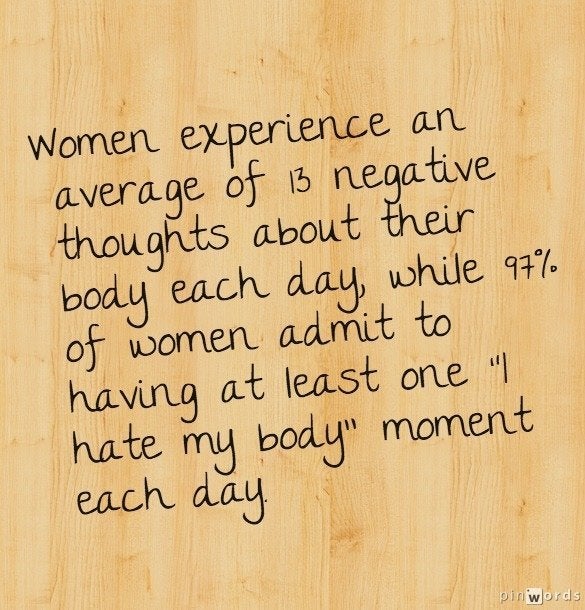I remember the day Brittany Murphy died.
I was at my favorite coffee shop, sipping a non-fat, no-whip latte: my liquid lunch.
My mother called as soon as the terrible news exploded my Facebook feed. "Did you hear about Brittany Murphy? Did you see her latest pictures? She looks terrible. She definitely had an eating disorder."
See?
See, Elizabeth?
This is what happens.
My mother meant well. I have an abysmal history with food. When I was 21, I weighed 58 pounds and, instead of committing me to another round of inpatient eating disorder treatment, my hopeless, powerless, frustrated friends and family resigned to watch me die. Years later, sipping thin coffee, spinning food porn for a graduate writing workshop, even though I looked normal, I still had lots of issues. I probably always will.
"Let Brittany Murphy be warning to her," my mother probably thought. She phoned that afternoon for the same reason she plays Karen Carpenter carols whenever we bake cookies on Christmas Eve.
What my mother probably didn't realize is my life was as tenuous at 58 pounds as it was during times I weighed twice as much.
A few days ago, I woke up, checked the scale, checked the news. I was surprised to read the latest development in the death of Brittany Murphy: the alleged, lethal levels of toxic, heavy metals detected in her hair, which, apparently, no one thought to test before now. Though these toxicology results have since largely been discredited, it's still too easy to believe Murphy, whose husband passed under eerily similar circumstances, died of pneumonia and iron deficiency anemia, as her death certificate asserts. Because that's how people with eating disorders die.
People With Eating Disorders:
Skinny
White
Affluent
Girls
I grew up loving Brittany Murphy's Tai: short, frumpy, sensitive -- like me. The fact that Tai is ultimately adorable encouraged me to believe I was lovable too. But Brittany Murphy did not look like Tai when she died. She'd slimmed considerably in the years following her breakout role. Her last photographs show lined biceps, grape eyes. There is, of course, concern over the credibility of this latest toxicology test, especially its administrator's quick conclusion that heavy metals in Murphy's hair suggest murder. Her death may always remain a mystery. But it's possible, it's likely, that Murphy's mainstream image as a thin, rich, white girl -- fragile and defenseless by default -- masked whatever was really wrong with her, whether that thing was criminal, heavy metal exposure, or something less sinister.
The day after the Brittany Murphy announcement, a good friend posted this "article" to my Facebook wall. She was hoping to hear my perspective on "5 Reasons To Date A Girl With An Eating Disorder." An old-fashioned Internet fight ensued. Our mutual Facebook friends had at it, first over whether the piece was supposed to be tongue-in-cheek, then over whether its tone even mattered at all.
Here is why "Tuthmosis" believes you should date a girl with an eating disorder:
She's hot.
She's cheap to keep.
She's vulnerable.
She's rich.
She's a nympho.
The real reason "Tuthmosis" believes you should date a girl with an eating disorder? Because writing something totally stupid, as such, is a great way to reap 131k Facebook shares, plus 3,000 retweets and counting.
I sat back, in virtual silence, content to let the Internet argument resolve itself. Until someone shared this:
"I've unintentionally dated plenty of girls with eating disorders. And in my experience, with the exception of #4, that list is spot on 99% of the time."
I returned to "5 Reasons To Date A Girl With An Eating Disorder," studied its sad stock photography:
"Skinny, Fancy, White Girl, Hunches Over Toilet With Index Finger Down Throat"
"Skinny White Girl Sees Fat White Girl Reflected in Mirror"
"Skinny White Girl in Snuggly Underpants And Matching Camisole Cries on Top of Scale"
I couldn't care less what some silly Internet troll says about people with eating disorders.
It deeply disturbs me to realize people actually believe these stereotypes.
It hurts to consider this against what might be a tragic oversight in the case of Brittany Murphy, a stereotypical SWAG picture of American Disordered Eating, who may not have had an eating disorder at all, whose death is still, ultimately unsolved.
It breaks my heart to remember all the faces I met through 10 years in and out of various eating disorder treatment facilities. They're not all SWAG faces. Some of the most tortured belong to men. Many belong to men and women who are morbidly obese, who are just as depressed and close to death as the most desperate anorexics. The faces in my memories are not all peaches and cream. They're also maple, chestnut, and terra. Many of them are etched with wrinkles. Many are missing teeth.
Tuthmosis writes, "Nothing screams white-girl problems louder than a good old-fashioned eating disorder. But they're more than that. Eating disorders have been -- quite appropriately -- declared a luxury reserved for only the most privileged members of the female race."
The fact that there is no female "race" aside, Tuthmosis and I apparently grew up in the same subculture, which insists a real eating disorder is a skinny, rich, white girl disease and, thus, not really a disease at all, but a lifestyle choice for spoiled brats and body-obsessed neurotics. That eating disorders are so perceptually linked to affluence is probably why they're so impossible to treat. It costs upwards of $2,000 a day for eating disorder sufferers to receive impatient treatment. Insurance coverage is sparse and notorious for cutting out before patients make any real progress. Many, many times I witnessed the sheer horror on people's faces when they learn they're being discharged because their insurance is up. I've heard them beg and plead to stay, threaten to take their own lives, because they can't possibly survive on the outside. Twenty percent of people with eating disorders don't survive on the outside. It takes, on average, seven years for those who do survive to recover. And "recover" is such a devastatingly relative word.
The worst side-effect of the SWAG stereotype is this: the longer we believe only skinny, white, affluent girls suffer from eating disorders, the more we isolate an entire community of not-skinny, not-white, not-rich, not-so-young, decidedly-not-female human beings, who suffer, not only with the soul-sucking burden that is an eating disorder, but with the belief they can't possible "have" what's killing them. The risk is it will kill them. And then everyone will wonder why.
ALSO ON HUFFPOST:

